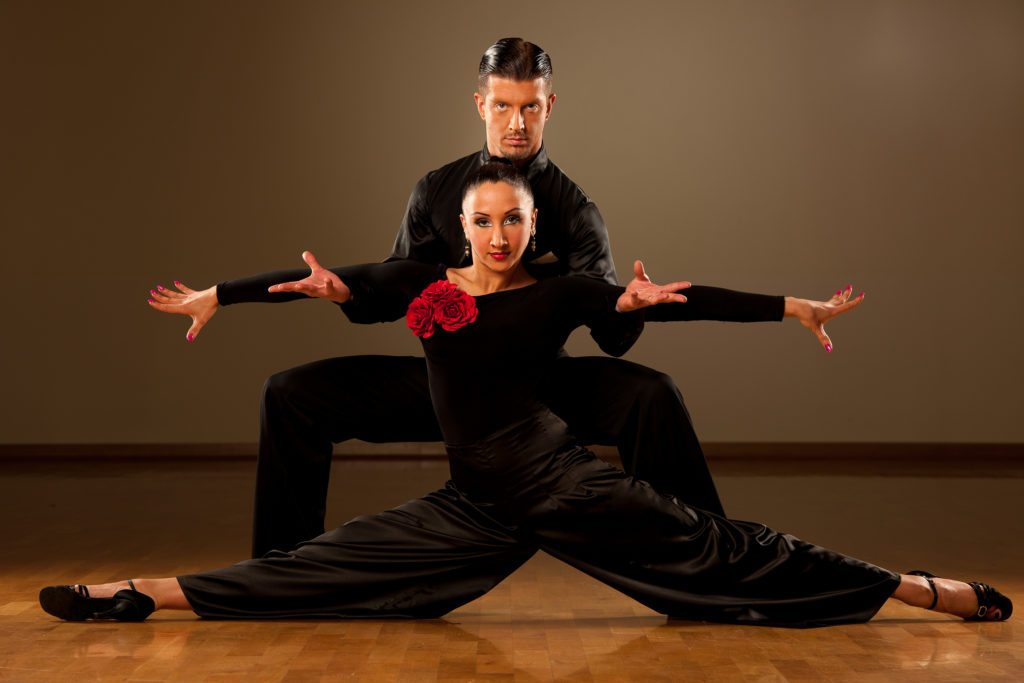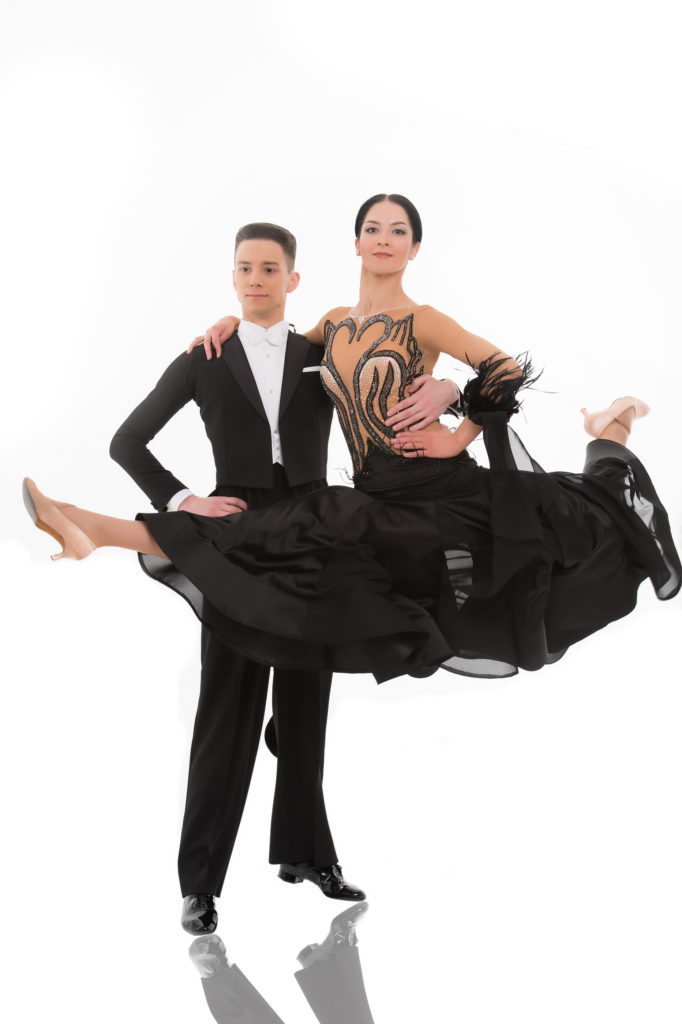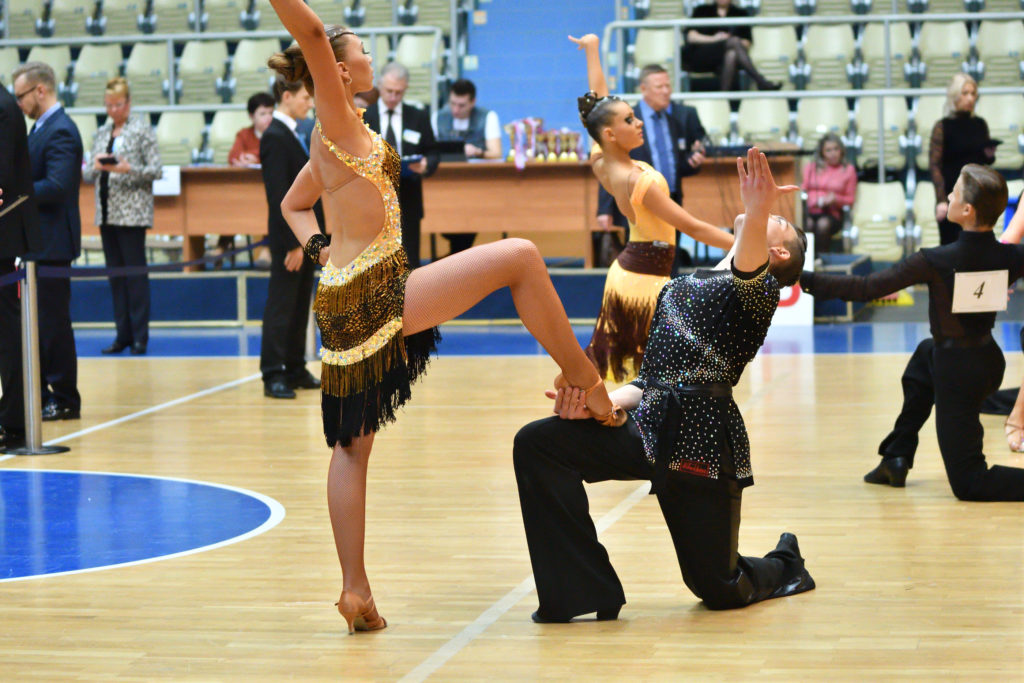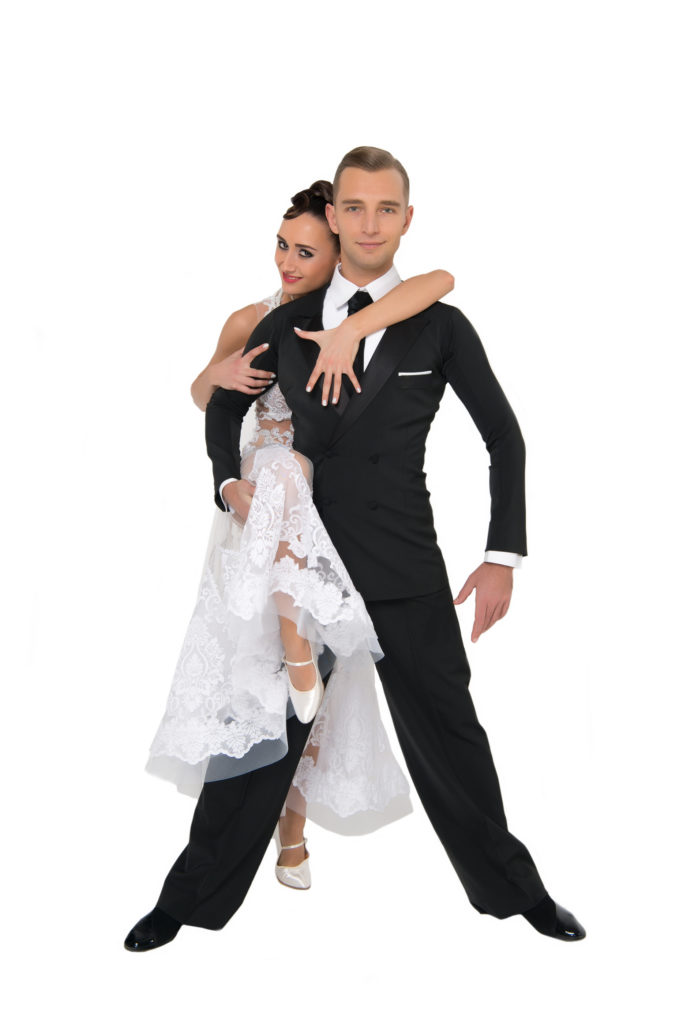Showcases: Why We Do Them, and Our Top Hacks for Students and Instructors
I remember my very first Student Showcase like it was yesterday: the extra lessons and coaching and hours of rehearsals; the time spent trying on gowns and having fittings at a Ballroom dress rental shop; the spray tanning; and last, but not least, the extreme nervousness. Now, however, with years of competing under my belt and being under the influence of GQ’s calming confidence, I don’t look at Showcases with the fear and awe that I once did. Instead, I am more focused on learning my steps and continually improving my technique in my competition routines.
You might wonder, then, why I still do Showcases. The simple reason is that, even if it does not earn me a lot of notoriety outside of the studio, a Showcase is a chance for me to practice being in front of an audience. However, I want to share with you in more detail about why I and other seasoned competitors at GQ Ballroom still do Showcases, as well as some suggestions that might make your Showcase routines more beneficial to your growth as a dancer and easier for your instructor.
Definition: What is a Showcase, really?
Before I get technical, and especially for anyone that is new to Ballroom Dancing, maybe I should first make sure that we all understand what Showcases actually are. Although they can be a tool for Ballroom Dance studios and instructors to increase business and attract more students, at their heart Showcases are dance recitals, where you, as a student, can show off what you have been learning to your friends and family and other studio members, just like you might have done as a child at your ballet studio.
Showcase Routine Philosophies
Next, based on my experiences prior to finding a Ballroom Dancing home at GQ Ballroom, I want to share a couple of different approaches to Showcase routines and some pros and cons about them, and then to share some of the GQ Ballroom philosophy, so that you can understand why we do Showcases the way we do and maybe adopt some of our techniques.
1. The Showcase Package
At a couple of the studios to which I’ve been, students who wanted to participate in a Showcase were sold separate Showcase packages, of maybe 6-10 lessons, that focused on learning a specially choreographed routine to a specific song.
Pros
- You get to learn and show off some cool, advanced steps or tricks above your syllabus level;
- You get to choose a song that has meaning to you, rather than being stuck at the mercy of whatever the DJ picks;
- You can acquire a solo routine that you can take to competitions; and
- You don’t have to use up regular lessons on learning a Showcase routine, because the package is purchased separately.
Cons
- You could be lacking the foundation to execute those advanced steps and tricks properly;
- You may find carving out time to use your Showcase Package lessons can delay working on your regular syllabus and competition routines;
- You are creating more work for your instructor. Imagine how difficult it is for him or her to keep everyone’s competition and Showcase/solo routines separate.
2. The Focus is the Showcase
At some other studios to which I’ve been, doing Showcases was the emphasis; so, for 6 months, the majority of a student’s lessons and coaching were focused on learning choreographed routines in one or two dances for the next semi-annual showcase.
Pros
- Again, you get to learn and show off some cool, advanced steps or tricks above your syllabus level;
- You get to choose a song that has meaning to you, rather than being stuck at the mercy of whatever the DJ picks; and
- You can acquire a solo routine that you can take to competitions.
Cons
- Again, you could be lacking the syllabus foundation to execute those advanced steps and tricks properly;
- You are creating more work for your instructor by making him or her have to keep everyone’s competition and Showcase/solo routines separate; and
- Since you are using your regular lessons to learn a Showcase routine, you could be delaying your overall progress, if you are not also continuing to work on learning the syllabus for your other dances.
The GQ Ballroom Solution
Rather than selling separate Showcase routine lesson packages or using a lot of regular lessons to learn a Showcase routine in one dance, we like to focus on teaching our students syllabus and competition routines in all of their dances. Then we like to incorporate our competition routines into our Showcase routines.
The Benefits
- We are always working on our foundation, instead of just learning a lot of fancy tricks that aren’t likely to be used outside of the context of a Showcase.
- Even if we are only doing one or two Showcase routines, our skills in our other dances are not atrophying and are, in fact, progressing, because we are continuing to work on them, even as we work on the Showcase.
- The Showcase can serve as a dress rehearsal for competitions, where we can see if there are any costume issues, or if any lines or footwork or step combinations need tweaking, all in front of a friendly, supportive audience.
- It allows us to come up with Showcase-ready routines quickly; and
- It is less work and less stress all around, which makes for happier students and instructors, because dancing is supposed to be fun.
In case you are worried that using your competition routines for your Showcase will make it boring or take the “show” factor out of your routine, don’t be.
- You can still pick a song that has meaning to you.
- Since competition music often gets cut early, while Showcase music is typically longer (although we still recommend keeping your Showcase routine to 2-3 minutes max), you have some extra play time to make it a show by telling a story to your song in the way you come out onto the floor, or by adding a trick or two at highlights in the music (which, let’s face it, you can pretty much only plan for in Paso during competitions, because you know there is a 99.9% chance they will play España cañí), or by adding some drama in your exit.
Ideally, we like to include at least 60-80% of a competition routine in a Showcase routine; but even if you can manage to use 40-50% of a competition routine, we think you will find that it saves you time and energy, allowing you to keep improving your Ballroom dancing overall, as opposed to just one or two dances.
Think of each competition routine as a role that you have in your repertoire, just like Albrecht in Giselle or Siegfried in Swan Lake or Aurora/Rose in the Sleeping Beauty or Kitri in Don Quixote. Even if the choreography for those roles usually stays about the same, you always hear ballet dancers speak of how they are constantly trying to improve their dancing and their interpretation of those roles. The same applies to Ballroom Dancing.
You shouldn’t discard a routine or step combination just because you’ve done it already; that is a waste. You should keep doing it and view each performance as a chance to make it better, and you will be sure to see your dancing grow. If you decide to reprise the same competition routine in another Showcase, you can easily make it look fresh by picking a different song and by creating a different story for it, using the tips that we mentioned previously.
Lastly…
Of course, we occasionally have students that love doing Showcases instead of competing, and who maybe only want to concentrate on one dance, and we are happy to help them with their goals. So if you have fun learning a brand new routine every Showcase, we aren’t trying to discourage you from that. We are merely sharing that we like to incorporate our student competition routines into our Showcase routines, because we believe that it helps our students to grow faster as dancers by strengthening their foundation and allowing them time to work on all of their dances.
If we can help you more with this topic or anything else, please don’t hesitate to contact us through gqballroom.com.




